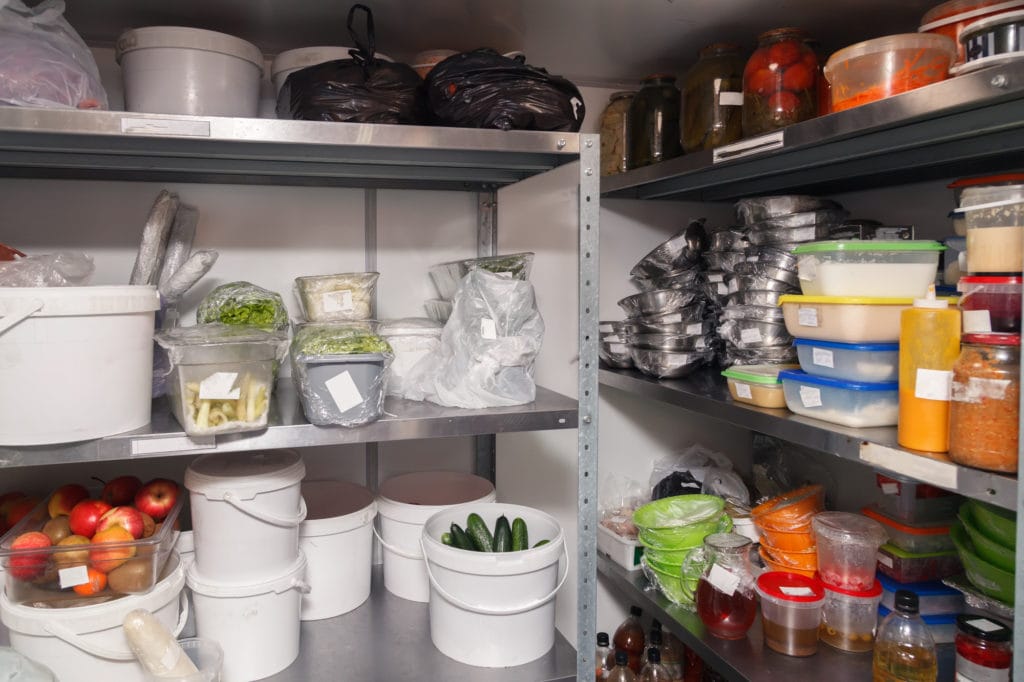An array of colors in the produce aisle, the aroma of fresh bread, and the sizzle of a tender cut of meat hitting the pan are all sensory experiences to look forward to when anticipating your next meal. Yet, have you ever paused to consider how your food storage methods influence these experiences? This subject is as significant as it is unexplored by most home cooks and professionals, possessing the potential to transfigure your culinary life.
In both domestic and commercial settings, proper food storage is central. It’s more than a safe, health-conscious practice; it’s a careful and considered act that preserves the culinary integrity of ingredients. Consider the ever-popular tomato. Food enthusiasts and researchers like Steamy Kitchen have delved into the mystery of tomato storage.
Tomatoes are often relegated to the refrigerator, impairing the natural enzymatic activity within the fruit, and suppressing the formation of essential flavor compounds. The result? A less than stellar taste. When you comprehend the science of food storage at a micro level, you can see how these principles apply in larger environments, such as catering facilities.
Food Safety Requirements for Storage
Lurking beneath the array of sensory experiences are the critical mechanics of food safety, particularly those related to storage. To ensure that businesses and consumers enjoy a safe experience, various types of insurance coverage and regulatory agencies impose specific food safety requirements.
Long-term Storage
Culinary enterprises such as caterers and food markets must often store large volumes of food. This is where long-term storage procedures come into play. To safeguard public health and uphold their reputations, businesses must adhere to a range of food safety standards set forth by governmental agencies and often enforced by entities providing catering insurance or farmers market insurance. Not only will you need general and product liability insurance, but it will protect you should any problems arise.
To maintain the integrity of food during long-term storage, follow the USDA’s Food Safety Basics tips:
- Store your perishables in the fridge within two hours or less if in hot temperatures.
- Use an appliance thermometer to double-check that your fridge temperature is at 40 degrees Fahrenheit and your freezer temp is at zero degrees.
- Ensure you cook or freeze your fresh meats, poultry, fish, and shellfish within two days. For beef, veal, lamb, and pork, three to five days is appropriate.
- Ensure your perishables are wrapped well to keep them fresh and prevent the spread of their juices to other food.
- For extra protection, use foil or freezer-safe plastic to freeze meats and poultry in their packaging.
- Understand canned food shelf lives. High-acid canned foods last up to 18 months while low-acid canned foods can last up to five years if unopened and untampered with.
Short-term Storage
Short-term storage focuses on the day-to-day operations of food businesses. It safeguards the quality and safety of food meant for imminent use. The same stringent standards apply in a high-end caterer’s kitchen or a farmer’s market. Ensuring perishables are kept at the correct temperature until preparation or sale, practicing ‘first-in-first-out’ to guarantee freshness, and maintaining a clean and well-organized storage environment is crucial.
Other food storage safety tips include:
- Consume ready-to-eat foods promptly. Use refrigerated items like luncheon meats as soon as possible to minimize the risk of Listeria growth.
- Keep refrigerated food in covered containers or sealed storage bags, and inspect leftovers daily for signs of spoilage.
- Store eggs in their carton inside the refrigerator, not on the door, where temperatures are typically warmer.
- Make sure items are adequately spaced to ensure proper air circulation and even cooling.
Safeguarding your ingredients helps create a safe environment for everyone.
Different Types of Food Storage Methods and Their Effects
The type of food storage utilized could be the linchpin in a successful culinary experience or the cause of a hazardous one. Here is an overview of different types of storage methods and their effects:
Dry Storage
Dry storage is often used for non-perishable food items such as grains, canned goods, spices, and baking ingredients. Stored in a cool, dark, and dry environment, these items retain their freshness for an extended period. However, even dry goods can degrade in quality over time, affecting their taste and nutritional content. Here are a few best practices:
- Store items off the floor to prevent contamination from pests and moisture.
- Use regular stock rotation to ensure the oldest items are used first, maintaining quality control.
- Maintain a cool, dry, and well-ventilated storeroom. The ideal temperature range is between 50 F and 70 F, with cooler temperatures preferable.
- The humidity in storage areas should be kept at 15% or below.
- It’s best to keep your food away from direct sunlight as it can lead to oxidation and loss of nutritional value and quality.
Along with these tips, there are great options for storing your dry goods, such as:
- Foil;
- Metal;
- Glass;
- Wax paper;
- Retort pouches.
These will ensure your dry goods stay fresh and flavorful until you’re ready to use them.
Cold Storage
Cold storage uses refrigeration or freezing to slow down bacterial growth in perishable food items such as dairy products, meat, fish, fruits, and vegetables. Maintaining the right temperature is vital for preserving these items’ taste and nutritional value.
Cold storage is also essential for maintaining food safety, as bacteria can multiply quickly when the temperature is between 40 F and 140 F. This temperature range is known as the “Danger Zone” — and bacteria can double in just 20 minutes. For optimal temperature control, businesses should use a commercial-grade refrigerator and set the dial between 33 F to 40 F.
Label all stored items with the date of storage and consistently practice FIFO. Businesses should also consider the potential for cross-contamination when storing food in cold storage. To prevent this, keep raw meats away from ready-to-eat foods and avoid overstocking shelves.
Hot Storage
Hot storage is commonly used commercially to keep prepared foods at safe temperatures until served. The temperature should be kept at 140 F or above. Hot storage also helps keep food safe from bacteria growth by inhibiting cross-contamination between raw and cooked foods when stored together in a refrigerator.
Preservation
Food preservation is a time-honored tradition that has found its place in modern kitchens. Techniques such as curing, pickling, fermenting, and canning increase the shelf life of foods and enhance their flavors in unique ways:
- Curing involves using salt and nitrates, which must be used in precise quantities to ensure safety.
- Similarly, fermenting requires careful monitoring of temperature and pH levels to avoid harmful bacterial growth.
- Canning is a great way to store fruits, vegetables, and even meats for months.
Beyond traditional methods of preservation, new and emerging tech innovations are also playing a part in impacting food quality. For instance, high-pressure processing (HPP) and modified atmosphere packaging (MAP) are innovative methods that help extend the shelf life of food without compromising its quality or taste.
What Method Is Best for Your Business?
Every culinary enterprise is unique, be it a ghost kitchen, a dynamic food truck, or a vibrant market stall. Therefore, identifying the proper food storage methods for your business requires understanding your operation’s distinct needs and constraints.
You can optimize food quality, enhance safety, and reduce waste by aligning your food storage practices with your business model. Here are some actionable tips to guide your decision-making process:
- Assess your inventory: Consider the types of food you handle most frequently. Cold storage will be crucial if your menu is rich in fresh produce and meats. If your cuisine involves a lot of dry ingredients, like grains or spices, efficient dry storage solutions should be your focus.
- Evaluate your business model: If you’re running a ghost kitchen or food truck, space is likely at a premium. Prioritize versatile storage solutions that maximize space and consider focusing on just-in-time inventory practices to reduce the need for large storage capacities. In contrast, market stalls or farm shops with access to fresh produce might invest more heavily in short-term cold storage to keep produce at peak freshness.
- Understand your volume and turnover: For high-volume, fast-turnover catering businesses, short-term cold and hot storage methods will be vital to ensure food safety and quality. Long-term storage and preservation methods might be more appropriate for lower-volume or specialty businesses.
- Consider your cuisine: For instance, if you specialize in fermented foods or cured meats, you’ll need space and the conditions for these preservation techniques.
- Embrace technology: Innovative solutions, such as smart fridges and freezers, can monitor temperature and humidity levels continuously, ensuring optimal conditions for food storage.
At the end of the day, the right storage techniques will conserve the integrity of your food — the heart of your business — and will contribute to delivering an exceptional culinary experience to your customers.


